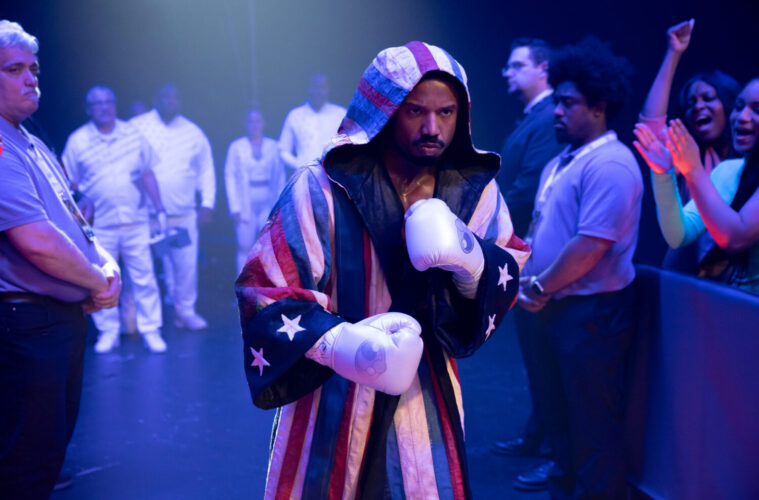If the Rocky franchise was the ultimate underdog tale that taught us about believing in yourself against all odds, then the Creed series attempts to take these ideas and add new nuances concerning social inequity and overcoming personal demons, which is sadly more relevant than ever. No matter where you come from or what your circumstances might have been growing up, with hard work and the support of others, you can do anything – from becoming the heavyweight boxing champion of the world to directing a big Hollywood movie for the very first time. With Creed III, Michael B. Jordan returns as Adonis Creed, the son of Rocky Balboa foe-turned-best friend Apollo Creed. With the help of the Italian Stallion in the first two Creed films, Adonis followed in his father’s footsteps to become a sports legend in his own right, and his journey largely lived up to the classics it was inspired by. In the new film, the titular character retires a champion until he forges a comeback driven by his painful past.
Beyond fighting adversity as lead narrative, an additional parallel here is that with the third Creed film, Jordan himself is sort of following a path set by Sylvester Stallone, who wrote, starred in and directed himself in four of the six Rocky films. Jordan is known as both a serious actor and a heartthrob (he won People magazine’s “Sexiest Man Alive” title in 2020), but in terms of behind-the-camera work, directing seemed to come out of the blue. Apparently it wasn’t, though. At Creed III’s press conference in West Hollywood last week, Jordan explained that the first Creed film’s writer and director, Ryan Coogler, who also directed the actor in one of his early films, 2013’s Fruitvale Station and in 2018’s Black Panther, encouraged him to make this pivot a long time ago.
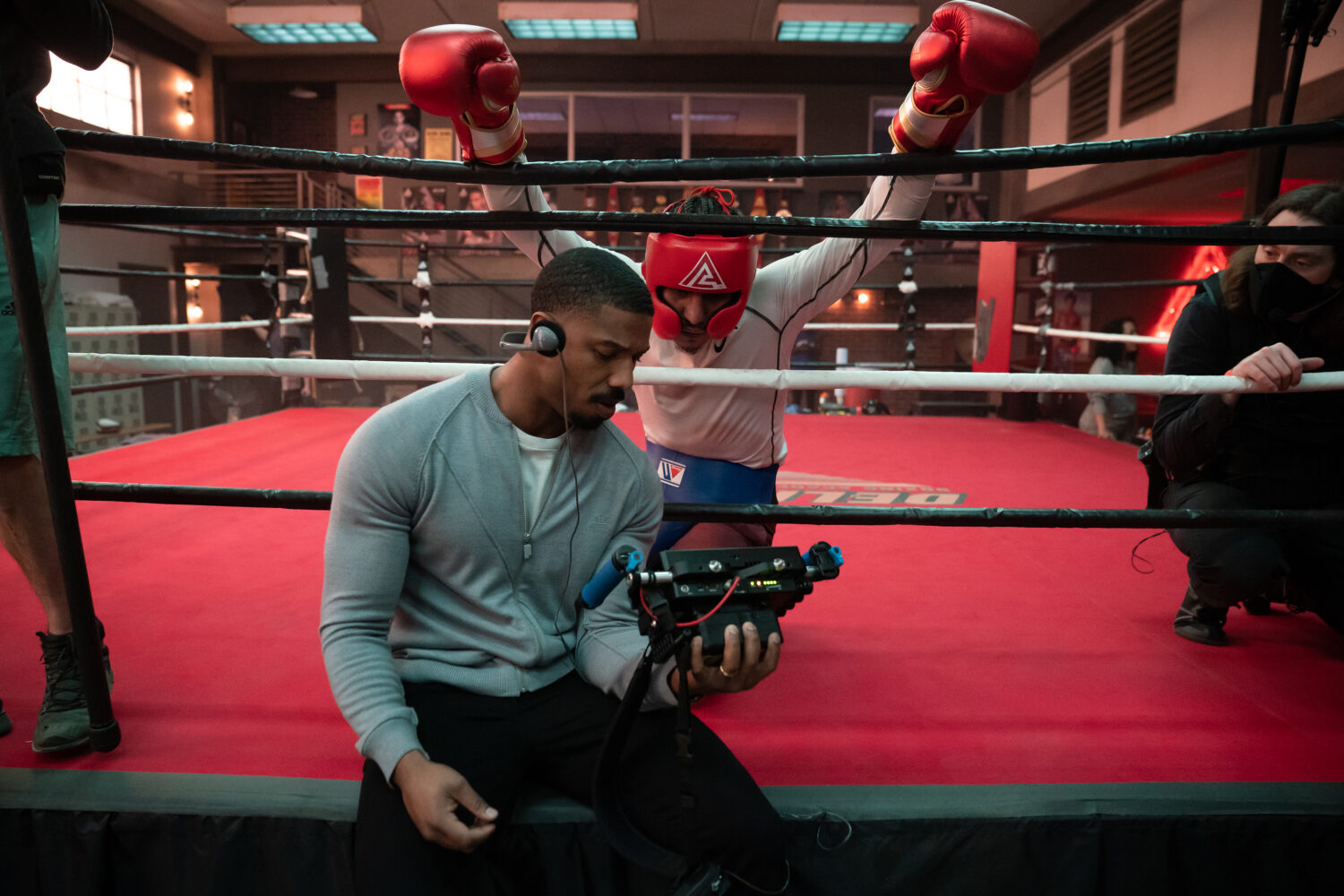
Director Michael B. Jordan and José Benavidez Jr. on the set of CREED III (Eli Ade/ © 2023 MGM Pictures Inc. )
“He definitely had a lot to do with it. You know, I think he first told me that I could direct….I was in awe of what he was doing, seeing a black man, my age, somebody I knew well, getting to command a set and show me what was possible,” Jordan shared. “I think for me, him telling me, like, ‘Mike, you can do this, too,’ was kind of that first seed that got planted in my head, that maybe I could direct. I didn’t know what it was gonna be. I didn’t know what movie I was gonna step behind the camera [for]. But we did Creed and then Creed II came along and Steven [Capple, Jr.] jumped into the director’s chair. And as we kind of grew, the third one just seemed like it was the perfect time for me to step behind the camera.”
In addition to Coogler, Jordan says that he sought advice from others he respected in Hollywood, particularly actor-directors like Jon Favreau, Bradley Cooper and Denzel Washington. “People who had been behind and in front of the camera, simultaneously,” he added. “Those people have had success at doing it, sometimes the first project as well. That really helped inform me on what to expect, even though there was nothing that anybody could really tell me to prepare me for what the journey was gonna be like. It was one of those things, you just have to live it and get through it. And it was the hardest thing I’ve had to do so far, but at the same time, I felt the most alive doing it. So it was rewarding.”
Notably, Jordan does not mention Stallone. Last year, as the film was in production, Sly admitted to Variety that he didn’t like the direction the third installment was taking and that it had a “different philosophy” than he would’ve featured. He opted not to appear in it, but he’s still listed as a producer. Reportedly, there has also been an escalating feud with Rocky/Creed producer Irwin Winkler about ownership of the franchise, but he said that the gist of his issues with Creed III were about its lack of “sentimentality” and the “darkness” that it sought to explore.
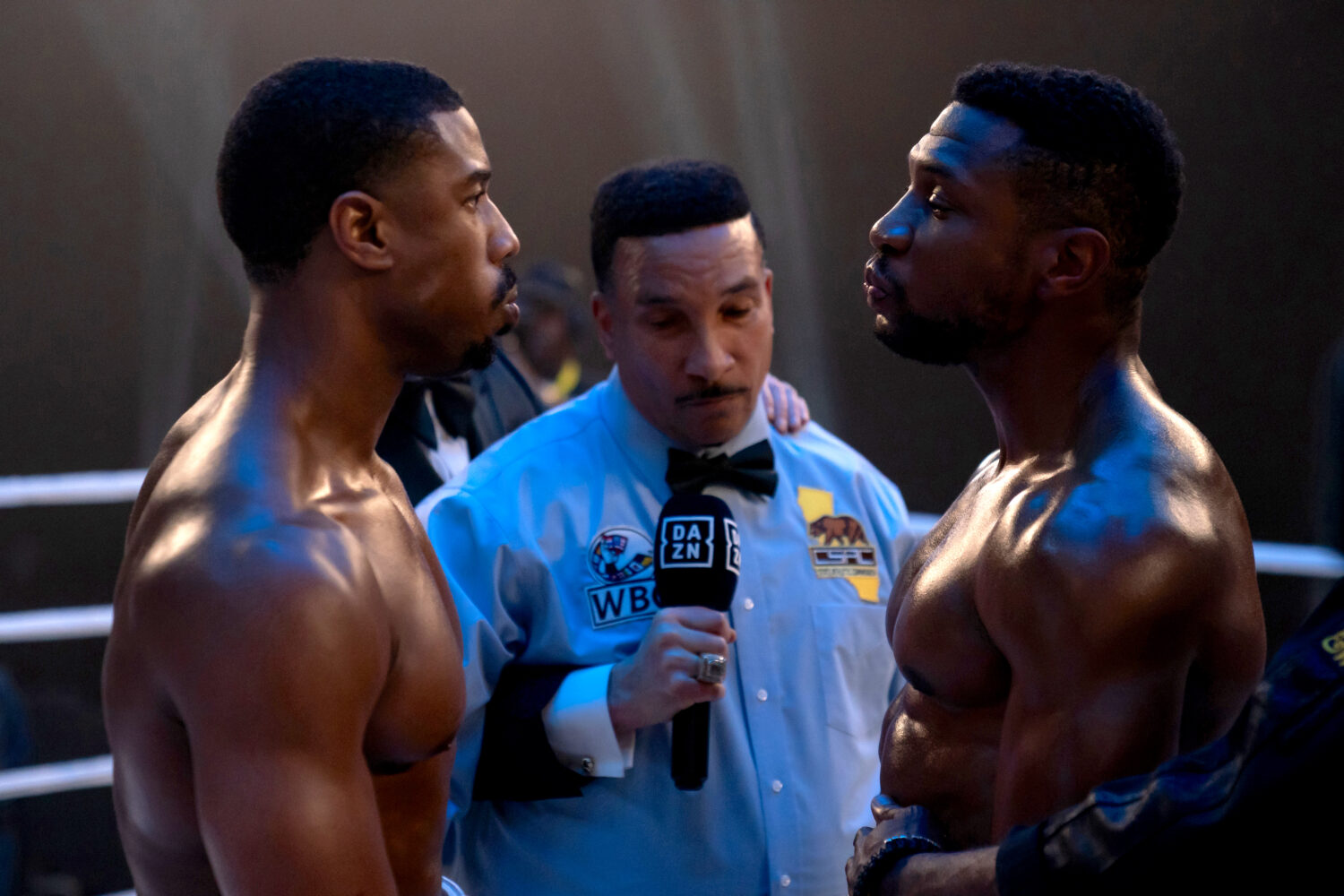
Michael B. Jordan and Jonathan Majors in CREED III (Eli Ade/ © 2023 MGM Pictures Inc.)
But the film isn’t really all that dark. In fact, it’s very much in the tradition of I and II, which of course, took cues from the original Rocky movies. Following the tried-and-true formula of spotlighting two opponents (one who has more to overcome than the other), both looking for redemption for their own reasons, the spinoff packs the same basic emotional punches. And we’re not spoiling anything to say that it ends exactly the way you think it will, with an uplifting message about transcending trauma and appreciating blessings like family and friends. Tessa Thompson is back as Creed’s adoring musician wife and there’s a storyline about their deaf daughter that’s pretty heart-warming. With an 87% positive score among critics and a 96% with audiences on Rotten Tomatoes as of this writing, the consensus on Jordan as a director has been very good, and with lots of buzz (especially in L.A., where the movie is set) and strong box office numbers, it’s a bona fide hit one week in.
A Creed refresher: Adonis was the product of an affair Apollo (played by Carl Weathers in the Rocky movies) had just before he died. His mother also passed away when he was a baby, so he ended up in an L.A. orphanage. Apollo’s widow Mary Anne (Phylicia Rashad) found him and adopted him as a child, but never encouraged him to box due to the danger. But Adonis was a fighter like his father, and after quitting his safe desk job, he goes to Philadelphia to look up his dad’s old friend Rocky, convincing him to come out of retirement and train him, ultimately getting him a championship bout. Creed doesn’t win the final fight in the first film, but he proves himself a world class opponent with a bright future. More importantly, he comes to terms with the legacy of his father, donning American flag shorts just like dad. In the second film, Adonis battles the son of Ivan Drago (Dolph Lundgren), the Russian boxer who killed his father in the ring. If that’s not a dark setup, what is?
Coogler wrote and produced this time around and the new story centers around Adonis Creed’s childhood friendship with up and coming boxer “Diamond” Damian Anderson (Jonathan Majors), whom he met while in the foster care system. Using flashbacks at the top of the film to illustrate the pair’s bond, and slowly revisiting and unraveling an incident that ended up putting Anderson in prison, the third installment takes a turn around the second act that’s decidedly different from previous films that focus more on the mentor/mentee relationship. We all know who to root for in Rocky films, and this one is no exception, but there is a more complex dynamic at play here, too.
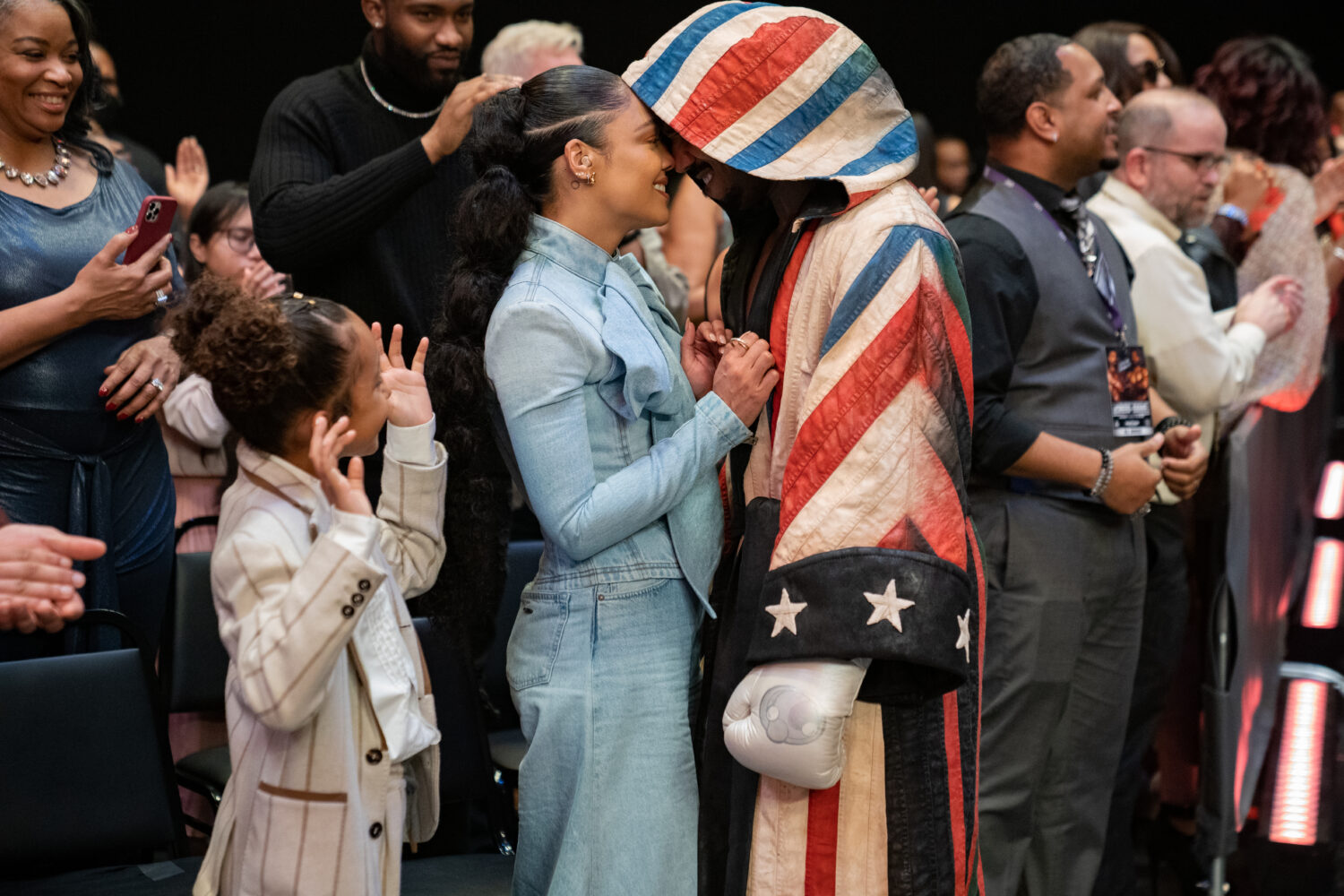
Mila Kent, Tessa Thompson and Michael B. Jordan in CREED III (Eli Ade / © 2023 MGM Pictures)
Creed III clearly aims to explore how opportunity (or lack thereof) can factor into one’s success, how where we come from can shape who we are and how one terrible incident can change everything. For this installment, Los Angeles is central to the story– the Crenshaw area, the Sunset Strip and Venice Beach all serve as scenery. The climactic final fight of the film even takes place at Dodger Stadium, dubbed “the Battle of Los Angeles,” which is not a Rage Against the Machine reference, but does seek to highlight how Creed (and Anderson)’s Angeleno pride is a big part of who they are.
We asked Jordan, who was born in Santa Ana, California, raised in New Jersey and currently lives in L.A., about the significance of Los Angeles as a backdrop for the film in terms of growing up in the city and how it shaped the main characters as people.
“Okay, there’s a lot in that. I think for first and foremost, from a franchise perspective, you’ve seen Adonis start in L.A., and then end up in Philly in search of this teacher, this mentor, that’s going to help him achieve the things that he needs to achieve,” he tells LA Weekly. “Having the second film be mostly in Philly and then you know, a little bit in Los Angeles, and then we end up in Russia. We’d never really had a chance to really establish Adonis’ home – what’s his home base? What really shaped him?” And since we were treating this like an origin story and a sequel in a trilogy all in one, we thought it was important to make L.A. a character and make it a homecoming of sorts.”
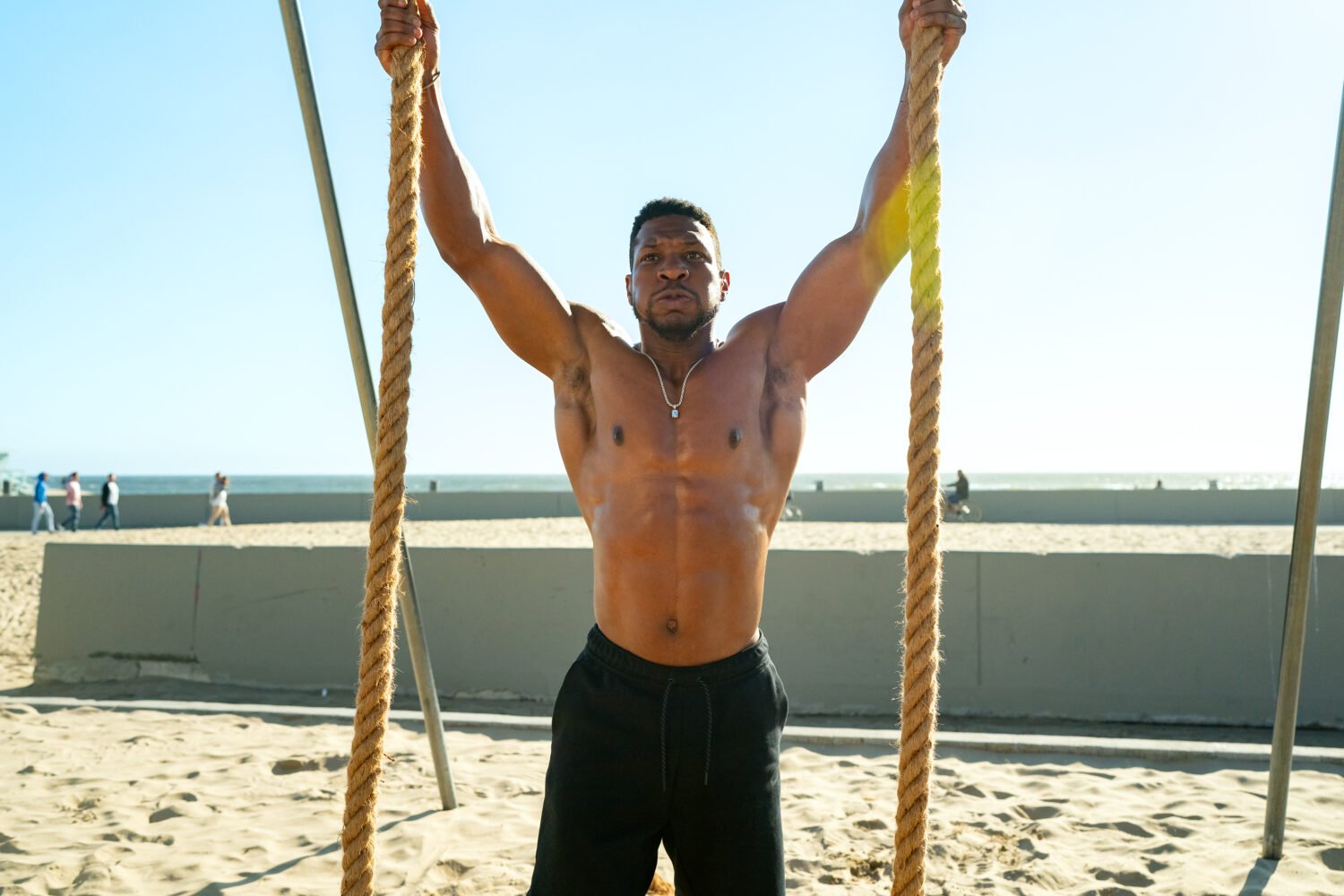
Jonathan Majors training in Venice Beach in CREED III (Ser Baffo/ © 2023 MGM Pictures)
“Then you break it down further,” he continues. “Okay, cool, what childhood trauma did [Adonis and Damian] share? It was his first protector, and you know, we’re products of our environments. So we leaned into the reality of those environments. Being from Crenshaw, and then living in Baldwin Hills, this Beverly Bel Air-ish type of area where Black families lived and thrived and had money. You know, where would Apollo Creed be? We talked to those things. And then we started thinking about what iconic environments do we want to put these two guys in – in the form of montages, or you know, when driving down the street. What familiar places can we show that aren’t oversaturated, when you think of L.A. and Hollywood? Sometimes those can be a little bit cheesy when it comes to films. I mean, like, we’re not going down to the Hollywood Walk of Fame. Certain areas are very familiar in L.A., but what hasn’t been photographed before? What are the parts of L.A. that you don’t really see on film and television? So that was a challenge to kind of find those places. Ultimately, we ended up at one of the more iconic places: the Hollywood sign. So there’s certain things you can’t get away from, and I think it served as a final kind of nail I felt that Adonis needed, that I think the audience needed. Hollywood was first the nickname they gave him when he went to Philly. So it felt very poetic to kind of come back around to that.”
Jordan also says that they wanted to show new places in L.A., like Sixth Street Bridge. “It was a new place that was starting to become very, very popular. People were drag-racing down there and walking on the bridge,” he notes. “It’s very visual, and we wanted to kind of just take things to new places.”
Speaking of the Walk of Fame, Creed III may have avoided a cliche stroll down Hollywood Boulevard, but Jordan didn’t stay away from the street in real life. Timed to coincide with the third film’s release, the actor got his own star there just last week. During the ceremony, Majors and Coogler paid tribute and clearly, there’s a lot of love between all three.
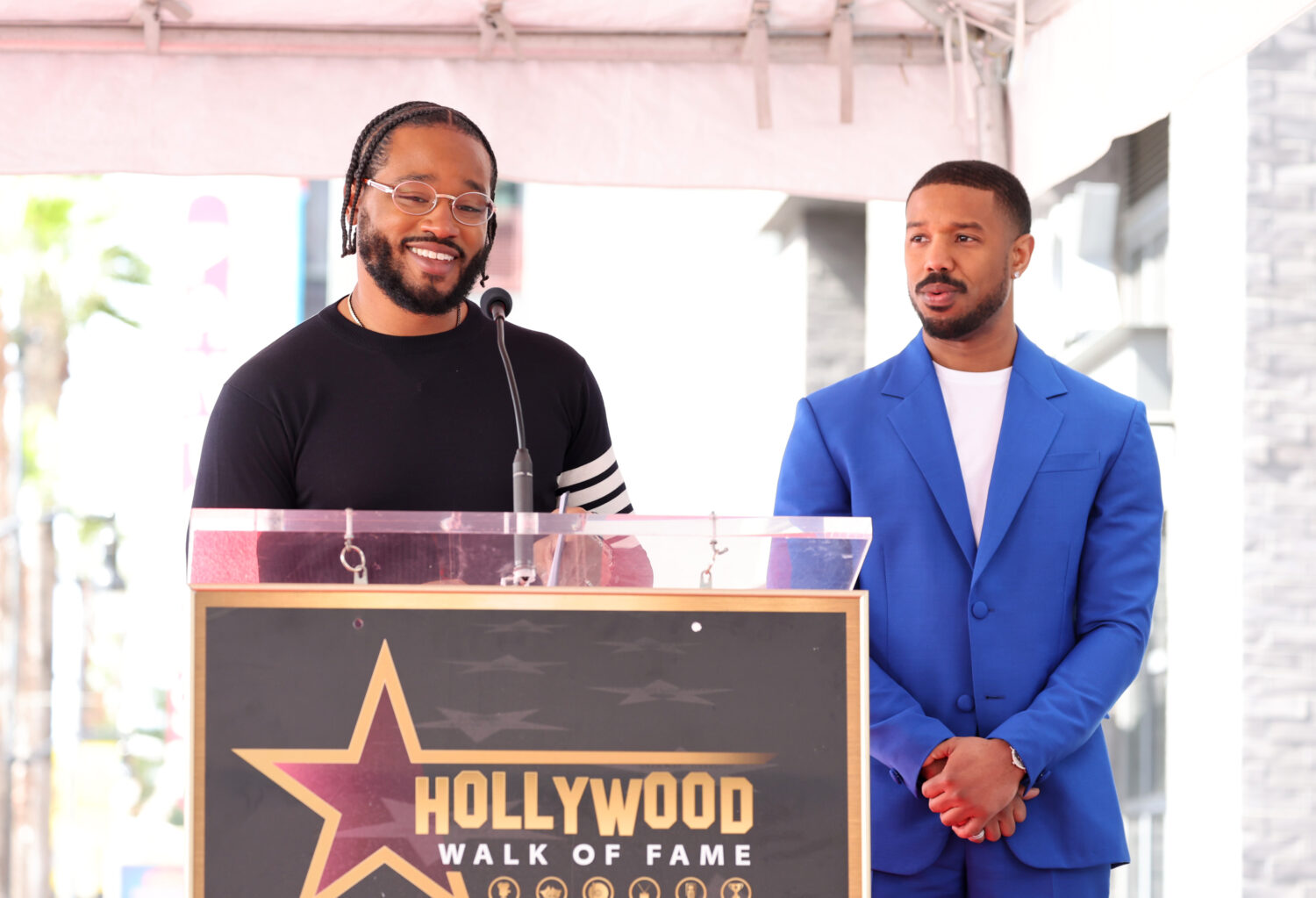
Ryan Coogler, Michael B. Jordan
“First, I love my brother,” said Majors, who like Jordan, also stars in a Marvel movie (he’s the villain in the latest Ant Man). “When I move around Mike – or Creed or Donnie or Michael B. Handsome or Sexiest Man Alive– Adonis, I’m reminded of the tale of Hercules. The story of a young man who was born as a mortal. Michael, to me, represents a mythical character. I don’t think it’s an act of luck or an act of chance that so many people see him as Adonis. Today, brother, you go from man to god. You sit amongst Olympus and … no man on the planet I know deserves it more.”
Coogler also had heartfelt sentiments for Jordan at the induction. “It’s been the ride of a lifetime, man — this decade working with this guy and watching him blossom into the phenomenal global talent that he is, the filmmaker that he is,” he gushed. “And knowing that our relationship can maybe be a blueprint for more relationships for the next folks that’s coming up, it’s exhilarating. It’s humbling.”
It’s obviously not a coincidence that Creed III’s promo blitz started during Black History Month. Jordan kicked off media appearances with a stint on Saturday Night Live in early February, proving his comic dexterity and his self-deprecating side (his high-profile relationship with model Lori Harvey had just ended months prior and he had no problem addressing it). From there, he started touting the technical aspects of the project (it was the first sports movie to be shot on IMAX cameras) and did interviews that seemed to focus on inspiring others.
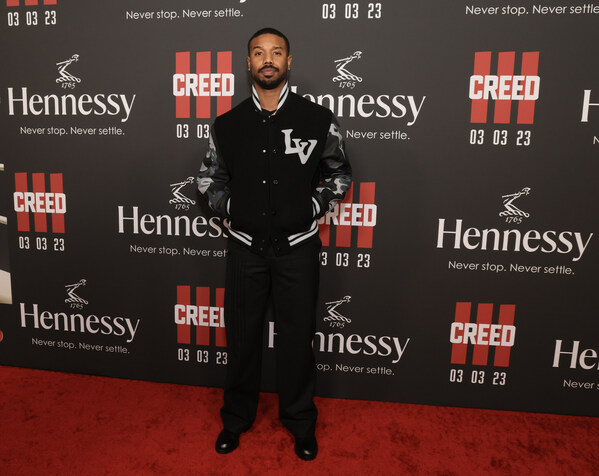
Michael B. Jordan at the “Creed III”/ Hennessy gym pop-up (Rodin Eckenroth/Getty Images for Hennessy USA)
To this end, he also partnered with Hennessy – a brand that not surprisingly has an important product placement moment between the two leads in the movie – to champion emerging Black filmmakers, launching a program they call the Legacy Makers Initiative. MBJ, MGM and Hennessy handpicked three up-and-coming directors and provided resources for them to make film shorts celebrating prominent Black creators in Hollywood, tied to the film release. The launch party for the project took place at a pop-up modeled after Creed’s gym in the movie last week. It had boxing exhibitions, and a screening room with appearances by the filmmakers themselves. Over some signature Henny-tails, we chatted with them.
“They reached out to me and it sounded like a cool project,” says Diana Ali Chire, who made her film about Creed III costume supervisor Ngina Bowen. “They allowed me to be as creative and go as weird as possible. A lot of my work is about Black female identity. This piece is eclectic and fun.”
Bowen says that being a part of the new movie was a dream come true. “I manifested this job,” she says. “To see Michael in both roles – we shot the boxing first, for like two weeks – so to see him be that fit, but also stepping back and directing at the same time, it was really amazing. I got to see the whole process, when you watch it and see what the boxers are wearing, the designers had a whole thought process behind it…”
Walter Thompson-Hernandez, who says his films “deal with questions about longing, family and hope,” covered Gavin “Mizzle” Matheiu, who was the the creative director of YG’s 4Hunnid label and heads his own clothing brand, called Supervsn Studios. As an MJB fan, he was excited to be part of the project, too. “Yeah I think we’re all aligned here and I think we have a similar vision and it feels really good,” he says. “And I’ve drank some Hennessy in my life – it tastes great and it’s important for the culture.”
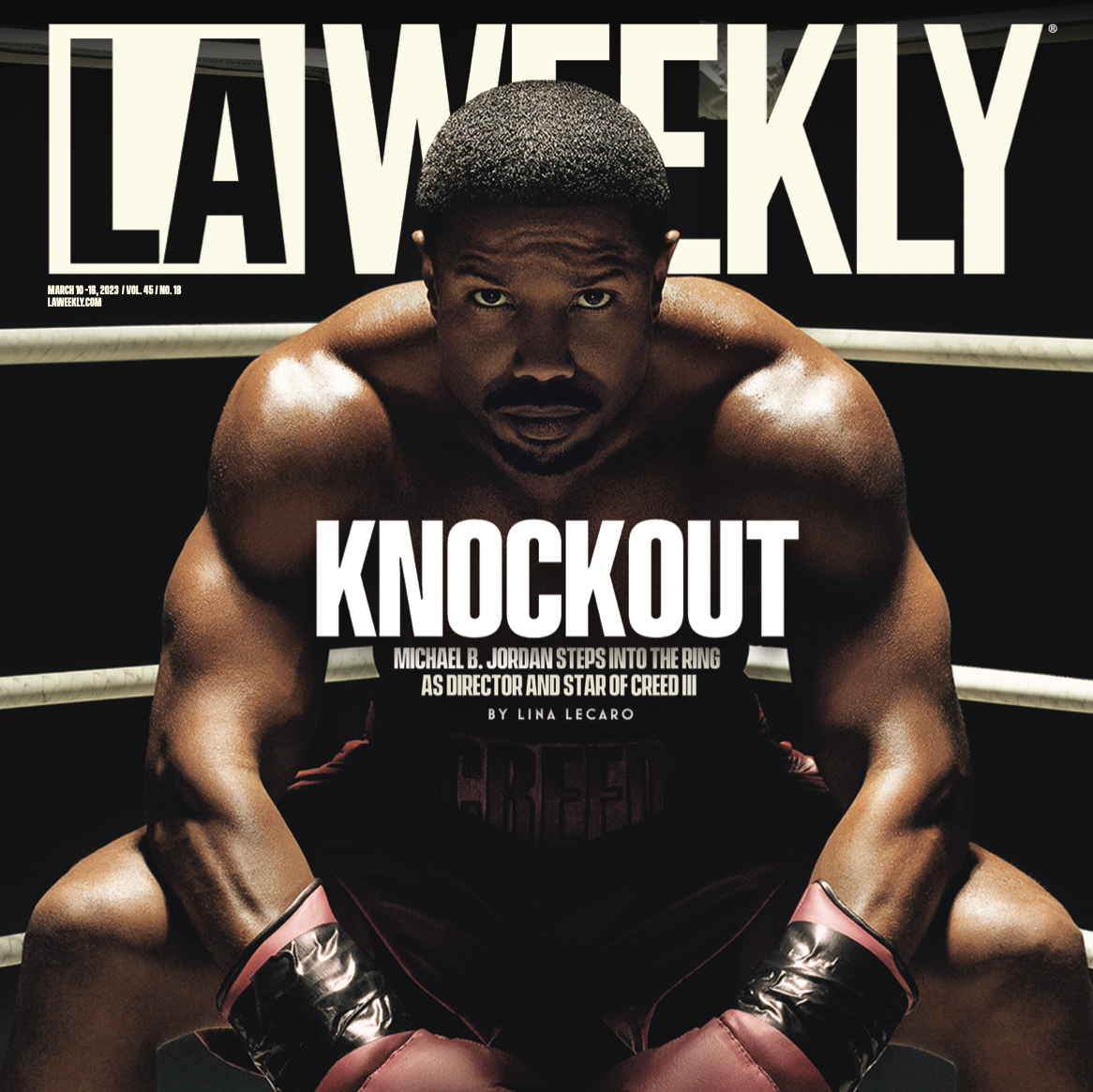
This week’s LA Weekly print cover story.
Filmmaker Tevin J Tavares filmed Chad Easterling, CEO of Obsidianworks, a “culture-powered” marketing agency co-founded by Michael B. Jordan himself. Bowen says Obsidian reached out to her initially about being involved and giving others a chance to learn about what she does and sharing what she learned on set, was key. “They had laser focus on this project,” she says of everyone involved. “You have to have that to be in that kind of physical and mental shape, and you kind of have to have that for life in general.”
Clearly, Creed III’s success serves as inspiration in more ways than one. Beyond its star/director, a lot of Black talent was behind this film, from production and execution to promotion. It’s been a busy week for Michael B. Jordan (whom by the way, no one confuses with the basketball legend anymore). He’s been involved in every aspect of this one, rolled with every punch, made every appearance and surely inspired others to take a swing and fight for their dreams in the process.
Editor’s note: The disclaimer below refers to advertising posts and does not apply to this or any other editorial stories. LA Weekly editorial does not and will not sell content.
Advertising disclosure: We may receive compensation for some of the links in our stories. Thank you for supporting LA Weekly and our advertisers.

